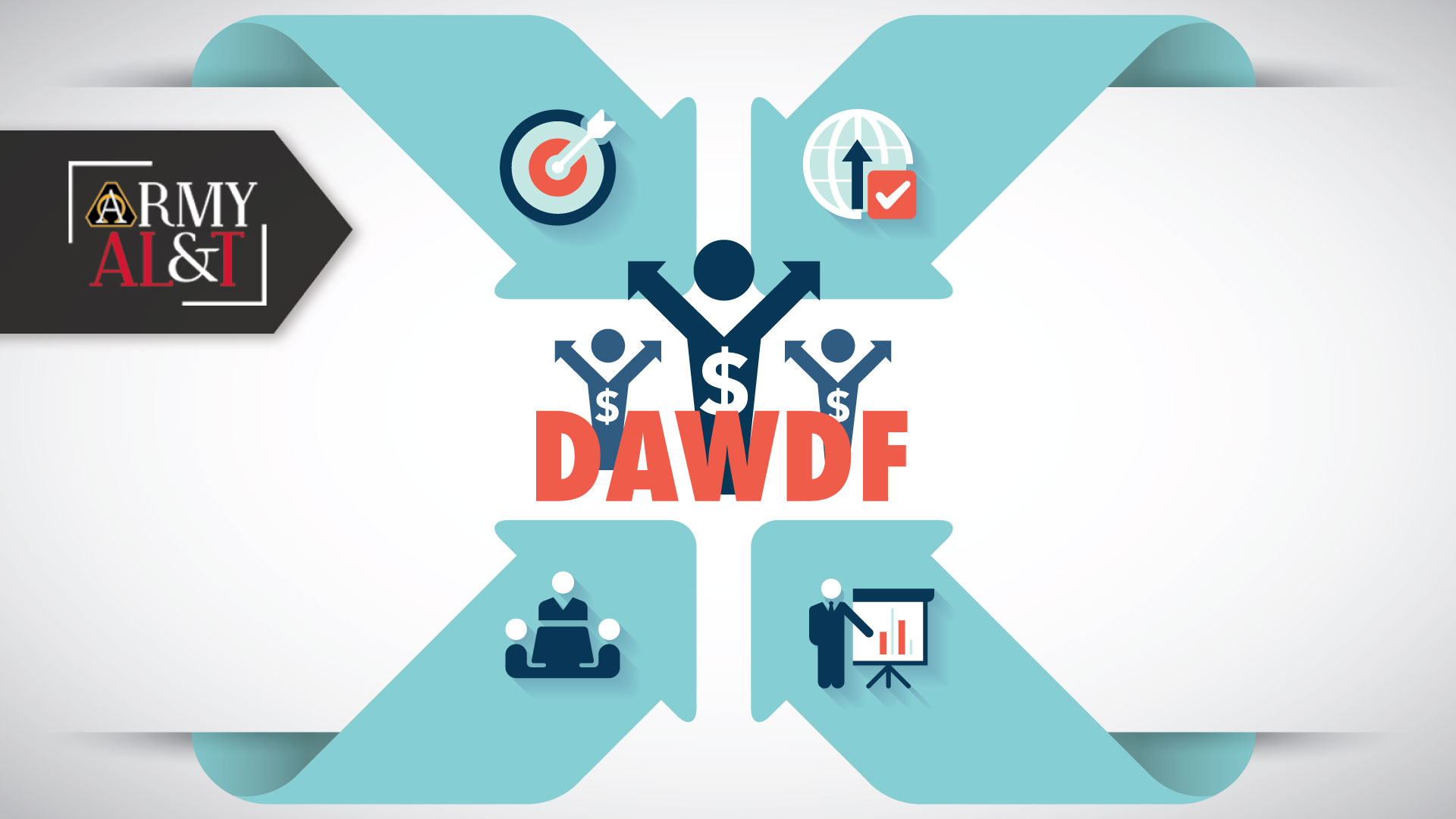
FROM THE DIRECTOR OF
ACQUISITION CAREER MANAGEMENT
CRAIG A. SPISAK
Lining Up Your Goals
Syncing up DAWDF funding and Human Capital Strategic Plan objectives will lead to an enhanced process and more transparency.
You can throw all the money you want at an acquisition effort, but if the people doing the work don’t know how to prioritize it and make sure it’s doing what it’s supposed to do, achieving your goals is going to be difficult.
All acquisition programs have at least three things in common: the work, the people doing it and the financial resources to support the work. Successful programs tend also to share an alignment of goals and objectives with the people doing the work.
We can’t just expect all of that to come together automatically. Successful efforts tend to provide adequate resources to the people doing the work—the education, training and all the other necessary elements that help align our mission with our priorities.
The Army acquisition community must not only determine how best to deploy our resources, but also how we use the Army Acquisition Workforce Human Capital Strategic Plan (HCSP) to ensure that the people who have to obligate that money are prepared to do so in the most effective and efficient manner.
We launched the HCSP in October 2016. It’s our “business plan” for developing the best possible acquisition workforce for the Army. To meet that objective, we must make sure that we focus our resources on our most important priorities. But we also need buy-in from the acquisition community on our major goals and objectives. Those will be inextricably linked to the HCSP and the specific goals and objectives that we have there.
FULFILLING THE PLAN
The HCSP has five goals:
- Workforce planning.
- Professional development.
- Leadership development.
- Employee engagement.
- Communications and collaboration.
Let’s focus on the first two goals, workforce planning and professional development.
One of the ways we improve workforce planning and professional development is with the Defense Acquisition Workforce Development Fund (DAWDF). Congress enacted DAWDF with the FY08 National Defense Authorization Act (NDAA), then made it permanent in the FY16 NDAA. This fund permits DOD to recruit and hire, develop and train, and retain its acquisition workforce. In FY18, DAWDF provided $86 million in funding to the Army Acquisition Workforce, which led to 322 quality initiatives, 183 new hires and training for 19,364 members of the workforce.
DAWDF REVIEW
For FY20, we have an enhanced structure that we’re putting in place for DAWDF funding for Army organizations, to make sure that our prioritization makes sense.
- Every request for DAWDF funding must align with one of the five HSCP goals.
- Every request will be reviewed by a council-of-colonels board.
- Every organization requesting DAWDF funding will brief acquisition leaders on its plan for using the funds.
- Every plan will be documented on a database to ensure transparency.
The U.S. Army Director for Acquisition Career Management (DACM) Office has always brought in people from the field and incorporated subject matter expertise to review DAWDF proposals. We are modifying this approach slightly— using the existing process and getting a greater degree of input from more of the stakeholders. There has always been a tremendous amount of rigor in DAWDF funding, and this is the next evolution of rigor to ensure that our stakeholders’ input is more broadly reflected.
THINK METRICS
All of those activities and efforts, specifically the initiatives, need to have concrete metrics associated with them. It’s way too easy, sometimes, for people to find what they believe to be a competency gap and think that there’s a way to train it away. Unless you understand the baseline competency and what we think we can accomplish through training before you start that training, then you may spend all sorts of money to develop a program or course that doesn’t exactly address the true gap and may never attain the desired result.
Let’s say you see a problem with how a product is being developed. You decide we have a gap in understanding a particular part of the process. You train against that part of the process. And yet you don’t see a change in the results.
Why? Because either, a) we haven’t really defined the requirement and recognized what the core problem is, or b) we haven’t used metrics to understand whether what we say we’re trying to solve actually gets solved. Metrics are important, and so is understanding the core problem.
When every initiative has very specific metrics associated with its objectives, you can actually know whether or not you’ve accomplished what you set out to do in the first place.
At the end of the day, it really is about professionalizing the acquisition workforce and ensuring that it has all the skills, tools and competencies needed so that we are world-class stewards of the taxpayers’ dollars. Developing acquisition professionals goes hand in hand with developing the best products, which requires special people doing very specialized work. We can’t afford in today’s environment to be just OK, we have to be exceptional!
This article is published in the April-June 2019 issue of Army AL&T magazine.
Subscribe to Army AL&T News – the premier online news source for the Army Acquisition Workforce.
![]() Subscribe
Subscribe







